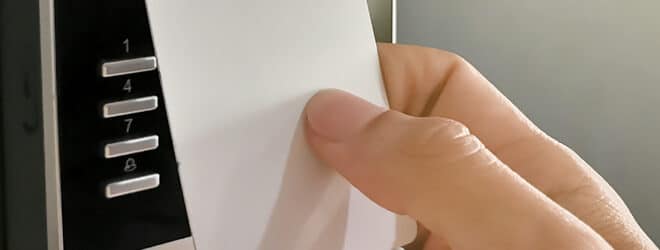It’s tough for thieves to escape the watchful eyes of a well-designed video surveillance system, and the fact is not lost on police. Depending on where you live, you may be required to register such systems, so police know where they might be able to find images that could support nearby investigations.
But the quality of video evidence can vary widely. Consider these factors when looking to design a surveillance system for your business.
- Begin with a map – The layout of a video system usually begins with a simple map of the area to be monitored, helping to define where cameras should be mounted and aimed. Just remember that the flow of traffic is as important as the layout itself. A camera pointing directly toward an outer door may help to identify someone who enters a building, but it will only show the back of someone’s head as they leave.
- Cover all the angles – A high-mounted dome camera with a wide-angle lens will help to identify suspicious activities across the wide area of a parking lot or warehouse, but it may not help to identify the faces of people involved in a crime. In contrast, a lens with a longer focal length, aimed at the height of a vehicle window, will help to identify the drivers who pass through a gate. The more angles that are covered, the better.
- Consider the camera’s role – Each type of camera is designed for a specific task. A Pan-Tilt-Zoom model will let security teams track suspicious activities in real time, while a bullet camera might come with infrared lights to extend visibility at night. Cameras designed for outdoor work can also include added protection from natural elements.
- Choose between CCTV and IP – Today’s IP-based video surveillance systems offer much higher resolutions than their analog CCTV (Closed Circuit TV) predecessors, but the differences do not end there. A hard-wired CCTV system will tend to feed images over a coaxial cable into a Digital Video Recorder (DVR), where the images are digitized and stored. In contrast, an IP system can stream the video over a company’s Ethernet cables into a Network Video Recorder (NVR), or even feed data over a wireless network. Just remember that high-quality video can overwhelm a company’s IT infrastructure unless it is properly managed.
- Record and store – The video of a crime in action will be helpful, but other valuable clues may be recorded in the preceding days. Were certain employees lingering in areas they didn’t belong? Information like this can be used to identify accomplices and help prevent future crimes.
- Light it up – Movie directors are heard to command “lights, cameras, action” for a good reason. Proper lighting helps to ensure that thieves cannot hide in the shadows. The cameras themselves can also make a difference. Models with a low lux rating and infrared (IR) capabilities will offer better views in low-light situations.
- Protect the privacy – Video recordings are governed by privacy laws, so cameras should only be aimed in public areas. Company policies are also required to include timelines concerning how long video is stored, logs to record those who view the contents, and added security for the recordings themselves.*
*SOURCE: Office to the Access to Information and Privacy Commissioner, New Brunswick.




